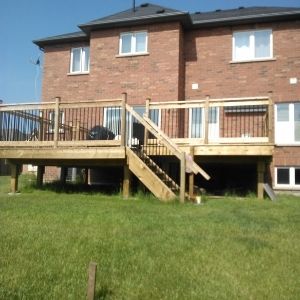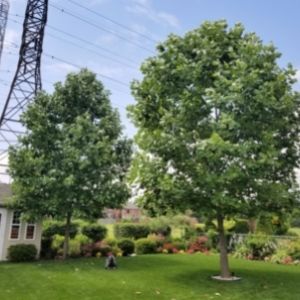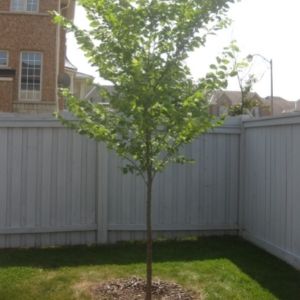Providing your new tree with an ideal space to grow, both above and below ground, will help ensure the following:
- Healthy root and canopy development
- Ability to properly absorb nutrients and water from the soil
- Decreased competition with other trees/shrubs
- Increased protection against pests and disease
All of these things mean reduced stress for your new tree!
Selecting the appropriate species for your property based on available space, rather than trying to fit in a species that does not suit your property’s conditions is very important. Here are some important considerations when thinking about where to plant your new tree:
1. Ensure ample soft ground space

Within this available soft ground space, LEAF also recommends choosing a location at least 7 feet away from any hard surfaces, including paving, patios and decks and at least 10 feet away from buildings with foundations, including sheds, garages and houses. Hard surfaces and foundations can cause soil compaction (when soil particles are pressed together), which makes it tougher for roots to infiltrate (break through) and absorb the available water and nutrients needed to flourish. As a result, roots may stay shallow and overall growth may be restricted. In addition, planting a tree further away from buildings helps to avoid future canopy conflicts as the tree grows.
2. Reduce competition

In order to survive and thrive, trees require water and nutrients from the ground. The availability of these resources may be limited by other trees growing in the same area. When this is the case, trees will compete with each other to meet their basic needs. This is why LEAF recommends planting a new tree at least 20 feet away from existing trees. Keeping space between your new tree and an existing tree also reduces future conflict with other canopies that may lead to costly pruning or removals in the future.
Another way to reduce competition for your tree is to plant it at least 8 feet away from stumps. Not only may it be physically impossible to plant through a large, old root system underground, but old roots also decompose over time, changing the pH of the soil. This can negatively affect the growth of a newly planted tree.
3. Think outside the box

In addition to overhead wires, be sure to stay at least 5 feet from fences/property lines. Doing so will help avoid branches growing into the fence, allow room for balanced canopy growth, minimize root damage during future fence repairs/replacements and reduce potential conflict with neighbours!
Below ground, it is important to think about the location of utilities such as gas, hydro lighting or irrigation. To ensure you know the location of any buried cables/wires on your property, you should always call Ontario One Call at 1-800-400-2255 or www.ontarioonecall.ca to request an underground utility check before planting.
Thinking about planting in a container or raised garden bed? We recommend avoiding tree planting in these spaces as there is not enough space for root growth. Instead, choose smaller growing native perennials whose root systems do not require as much soil volume to flourish.
Think you have the ideal space to plant a new tree? Visit our Homeowners page for more information on how LEAF can help you pick the right tree for the right place!
Brenna Anstett is the Residential Planting Programs Manager at LEAF.
LEAF offers a subsidized Backyard Tree Planting Program for private property. The program is supported by the City of Toronto, the Regional Municipality of York, the City of Markham, the Town of Newmarket, the Regional Municipality of Durham, the Town of Ajax, the City of Oshawa, the City of Pickering, the Township of Scugog, the Town of Whitby, Ontario Power Generation, Ontario Trillium Foundation and GrandTrees/Canadian Trees For Life.
